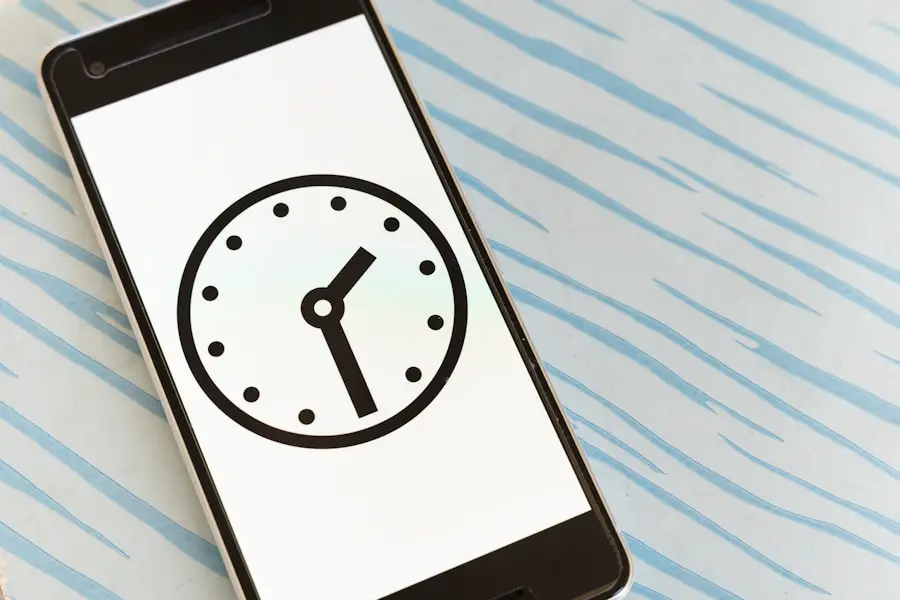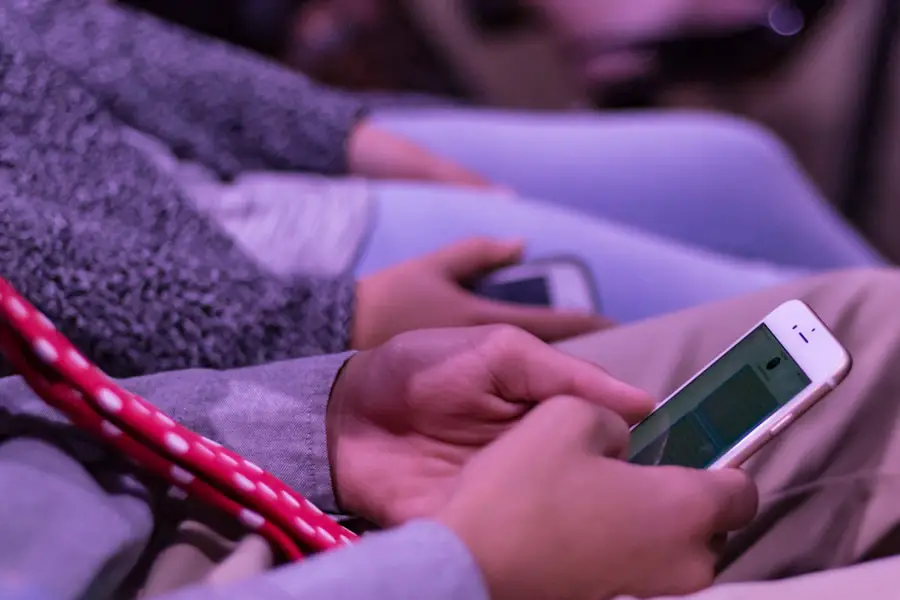In an age where digital devices are ubiquitous, monitoring screen time on Android devices has become increasingly vital. The proliferation of smartphones has transformed how we communicate, work, and entertain ourselves. While these devices offer unparalleled convenience and connectivity, they also pose significant risks when used excessively.
Understanding the importance of screen time monitoring is essential for fostering healthier habits and ensuring a balanced lifestyle. Excessive screen time can lead to a myriad of issues, including decreased productivity, disrupted sleep patterns, and impaired social interactions. For instance, studies have shown that individuals who spend more than three hours a day on their devices are more likely to experience anxiety and depression.
By keeping track of screen time, users can identify patterns in their usage and make informed decisions about their digital habits. This awareness can lead to healthier choices, such as allocating more time for physical activities or face-to-face interactions, ultimately enhancing overall well-being.
Key Takeaways
- Monitoring screen time on Android is important for maintaining a healthy balance and reducing the negative effects of excessive screen use.
- Accessing screen time data on Android devices can be done through the settings menu, where users can view detailed usage statistics.
- Setting up screen time limits and restrictions on Android can be achieved by using built-in features like Digital Wellbeing or Family Link.
- Utilizing third-party apps can provide additional tools for tracking and managing screen time, offering more customization and control options.
- Tips for reducing screen time on Android include setting specific goals, using app timers, and creating designated tech-free zones in the home.
- Excessive screen time can have a detrimental impact on mental and physical health, leading to issues such as eye strain, poor posture, and disrupted sleep patterns.
How to access screen time data on Android devices
Tracking Screen Time and App Usage
This feature not only tracks screen time but also offers a comprehensive overview of app usage, notifications received, and even the number of unlocks throughout the day. Once in the Digital Wellbeing section, users will find a dashboard that displays their daily screen time, broken down by individual apps.
Identifying Usage Trends and Patterns
Additionally, the dashboard provides insights into usage trends over days or weeks, helping users identify patterns that may warrant changes in behavior. For those who prefer a more visual representation of their data, the app offers graphs and charts that illustrate screen time trends, making it easier to comprehend one’s digital habits.
Making Conscious Decisions About Usage
This breakdown allows users to see which applications consume the most time, enabling them to make conscious decisions about their usage.
Setting up screen time limits and restrictions on Android

Setting up screen time limits and restrictions on Android devices is an effective way to promote healthier usage patterns. The Digital Wellbeing feature includes options for users to establish daily limits for specific applications or categories of apps. For instance, if a user notices they are spending excessive time on social media platforms, they can set a daily limit of one hour for those apps.
Once the limit is reached, the app will be paused for the remainder of the day, encouraging users to engage in alternative activities. In addition to app-specific limits, Android devices also allow users to enable “Focus Mode,” which temporarily pauses distracting apps during designated times. This feature is particularly useful for individuals who struggle with concentration while working or studying.
By silencing notifications and restricting access to certain applications, users can create an environment conducive to productivity. Furthermore, parents can utilize these features to set restrictions on their children’s devices, ensuring that screen time remains balanced and healthy.
Utilizing third-party apps to track and manage screen time
| Third-Party App | Number of Downloads | User Rating | Features |
|---|---|---|---|
| Moment | 1 million+ | 4.5/5 | Screen time tracking, app usage monitoring, and device usage alerts |
| Screen Time | 500,000+ | 4.2/5 | App blocking, daily usage reports, and screen time limits |
| QualityTime | 300,000+ | 4.0/5 | App usage analytics, screen time breakdown, and device usage history |
While Android’s built-in features provide a solid foundation for monitoring screen time, many users may find additional value in third-party applications designed specifically for this purpose. These apps often offer more advanced tracking capabilities and customizable features that cater to individual needs. Popular options include “StayFree,” “ActionDash,” and “Forest,” each providing unique functionalities that enhance the user experience.
For example, StayFree not only tracks app usage but also offers detailed statistics and insights into usage patterns over time. Users can set personalized goals and receive reminders when they exceed their limits. ActionDash takes it a step further by integrating with Google’s Digital Wellbeing data while providing additional features like usage trends and app rankings based on time spent.
On the other hand, Forest gamifies the process of reducing screen time by allowing users to grow virtual trees as they stay off their devices, creating a fun incentive to limit usage.
Tips for reducing screen time on Android
Reducing screen time on Android devices requires intentional effort and strategic planning. One effective approach is to establish designated “phone-free” zones or times throughout the day. For instance, setting aside specific hours in the evening for family interactions or hobbies can help create boundaries around device usage.
Additionally, turning off non-essential notifications can significantly reduce the temptation to check one’s phone frequently. By minimizing distractions, users can focus on more meaningful activities without the constant pull of their devices. Another practical tip is to replace screen time with alternative activities that promote well-being.
Engaging in physical exercise, reading books, or pursuing creative hobbies can provide fulfilling experiences that do not involve screens. Users might also consider using apps that encourage mindfulness or meditation as a way to unwind without resorting to their devices. By consciously choosing activities that enrich their lives outside of screens, individuals can gradually reduce their reliance on digital devices while enhancing their overall quality of life.
The impact of excessive screen time on mental and physical health

The consequences of excessive screen time extend beyond mere distraction; they can significantly impact both mental and physical health. Research has indicated a strong correlation between high screen time and various mental health issues such as anxiety, depression, and attention disorders. The constant exposure to social media can lead to feelings of inadequacy and low self-esteem as individuals compare themselves to curated online personas.
Moreover, excessive screen time often results in reduced face-to-face interactions, which are crucial for building meaningful relationships and emotional support systems. Physically, prolonged screen time can contribute to a range of health problems including eye strain, poor posture, and sleep disturbances. The blue light emitted by screens has been shown to interfere with melatonin production, making it difficult for individuals to fall asleep at night.
This disruption in sleep patterns can lead to chronic fatigue and decreased cognitive function during waking hours. Furthermore, sedentary behavior associated with excessive device use is linked to obesity and other lifestyle-related diseases. By understanding these impacts, individuals can take proactive steps to manage their screen time effectively and prioritize their mental and physical health.
If you are interested in learning more about managing screen time on your Android device, you may also want to check out this article on how to protect your privacy while using apps and software. This article provides valuable information on how to safeguard your personal information while still enjoying the benefits of technology.
FAQs
What is screen time on Android?
Screen time on Android refers to the amount of time a user spends on their device, including the time spent on various apps and activities.
Why is it important to track screen time on Android?
Tracking screen time on Android can help users understand their digital habits and make informed decisions about managing their time and reducing excessive device usage.
How can I see my screen time on Android?
To see your screen time on Android, you can go to the “Digital Wellbeing & parental controls” section in your device settings. From there, you can view a detailed breakdown of your screen time and app usage.
Can I set limits on my screen time on Android?
Yes, Android devices offer features that allow users to set app-specific time limits and schedule “downtime” to restrict usage during certain hours.
Are there third-party apps available to track screen time on Android?
Yes, there are several third-party apps available on the Google Play Store that offer additional features for tracking and managing screen time on Android devices.
